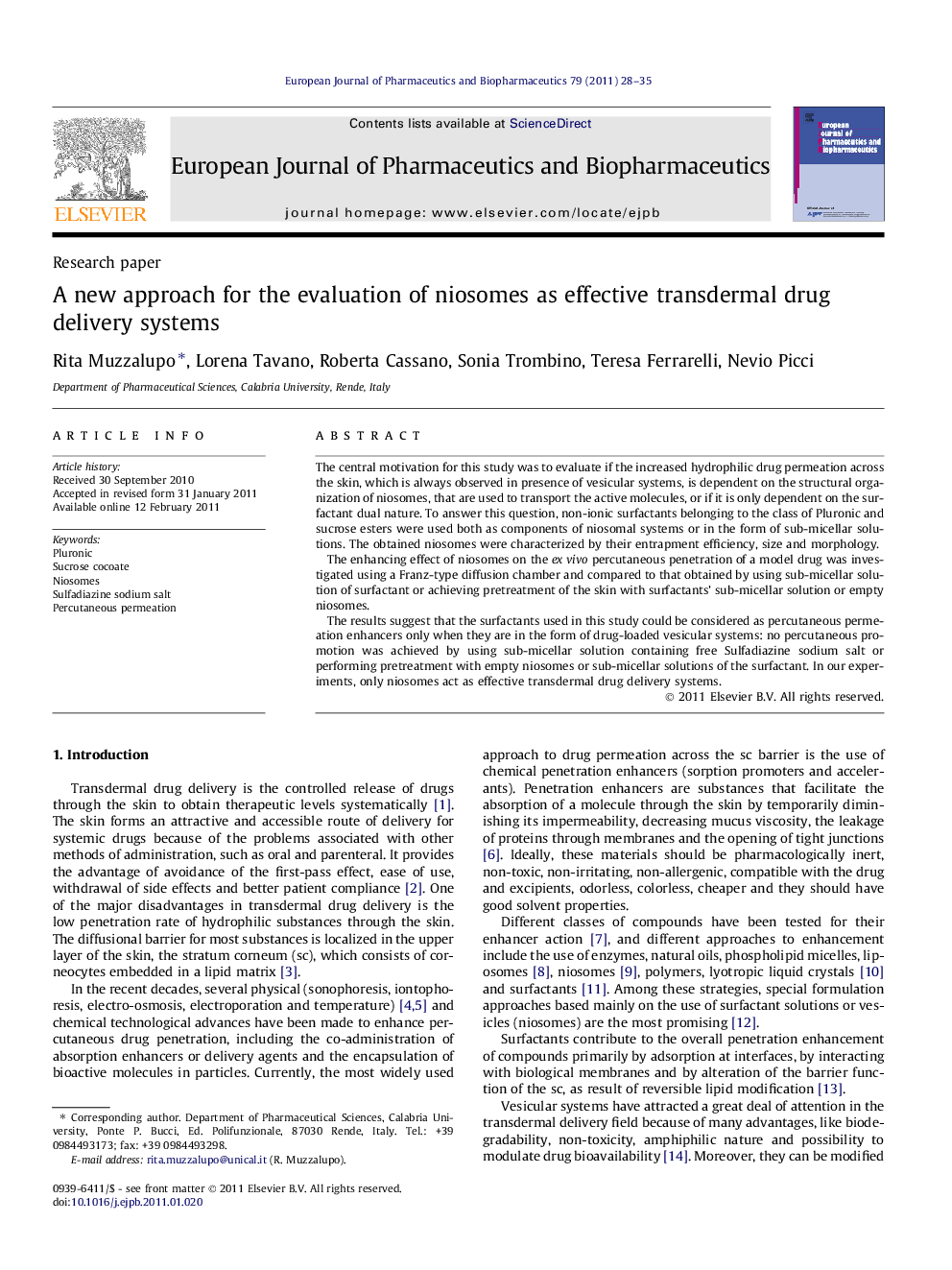| Article ID | Journal | Published Year | Pages | File Type |
|---|---|---|---|---|
| 2085435 | European Journal of Pharmaceutics and Biopharmaceutics | 2011 | 8 Pages |
The central motivation for this study was to evaluate if the increased hydrophilic drug permeation across the skin, which is always observed in presence of vesicular systems, is dependent on the structural organization of niosomes, that are used to transport the active molecules, or if it is only dependent on the surfactant dual nature. To answer this question, non-ionic surfactants belonging to the class of Pluronic and sucrose esters were used both as components of niosomal systems or in the form of sub-micellar solutions. The obtained niosomes were characterized by their entrapment efficiency, size and morphology.The enhancing effect of niosomes on the ex vivo percutaneous penetration of a model drug was investigated using a Franz-type diffusion chamber and compared to that obtained by using sub-micellar solution of surfactant or achieving pretreatment of the skin with surfactants’ sub-micellar solution or empty niosomes.The results suggest that the surfactants used in this study could be considered as percutaneous permeation enhancers only when they are in the form of drug-loaded vesicular systems: no percutaneous promotion was achieved by using sub-micellar solution containing free Sulfadiazine sodium salt or performing pretreatment with empty niosomes or sub-micellar solutions of the surfactant. In our experiments, only niosomes act as effective transdermal drug delivery systems.
Graphical abstractSchematic representation of the synthesis of modified L64ox and P105ox Pluronic surfactants and typical photomicrographs of obtained niosomal formulations as seen by TEM..Figure optionsDownload full-size imageDownload as PowerPoint slide
